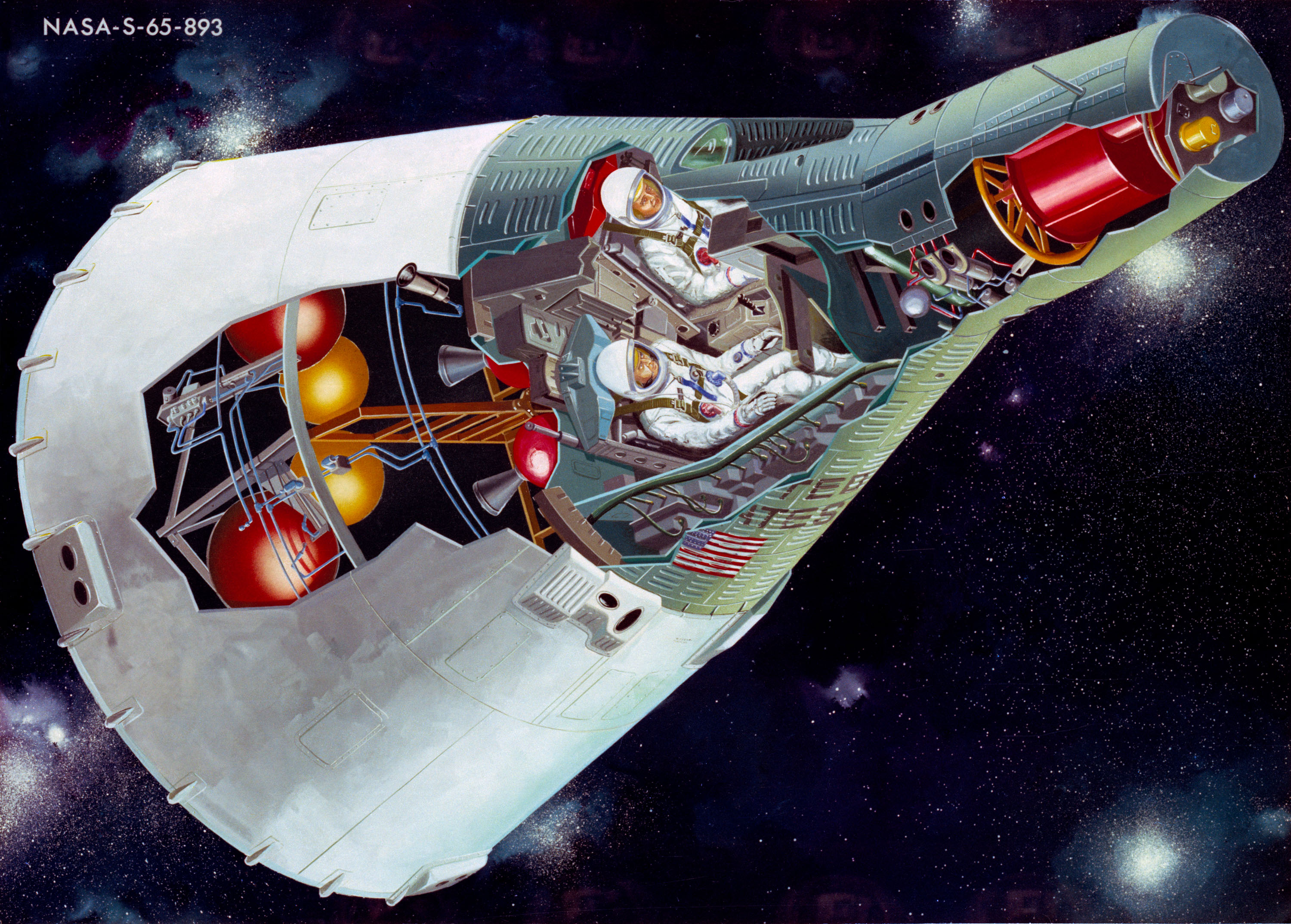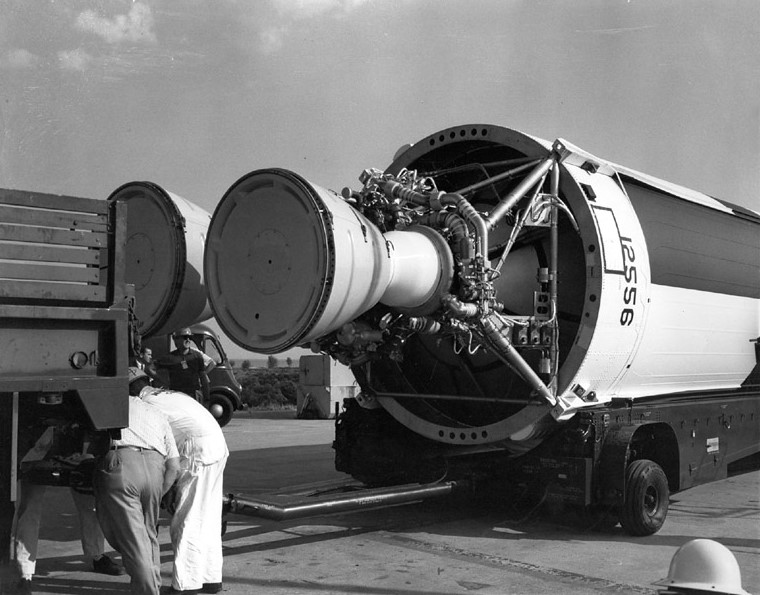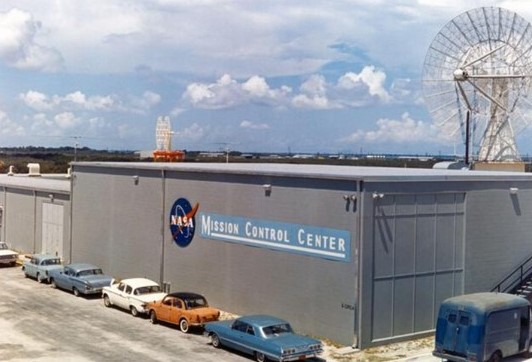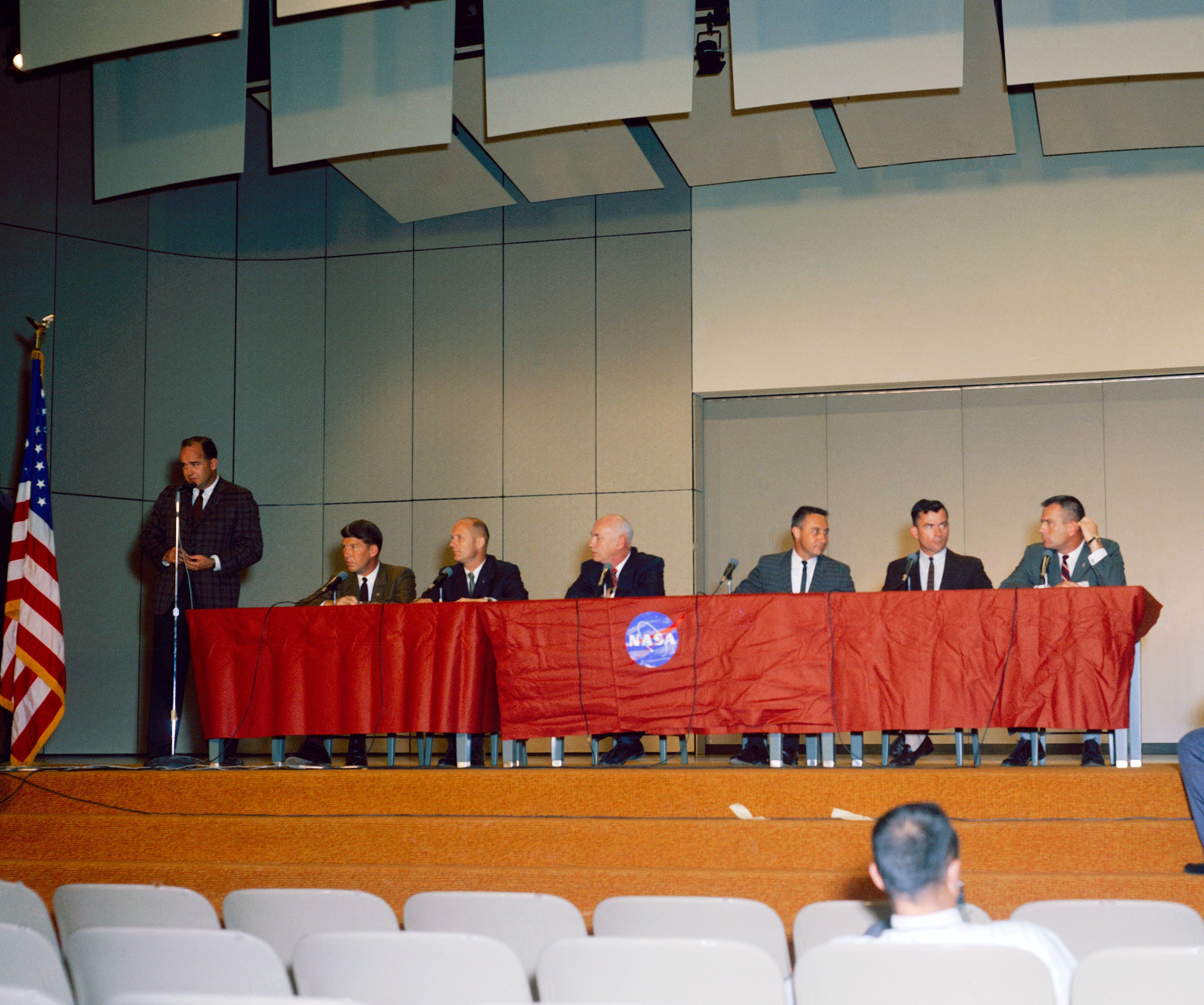11.04.2024

On April 8, 1964, Gemini 1 successfully completed the first uncrewed test flight of the Gemini spacecraft and its Titan II booster. The three-orbit mission proved the structural integrity of the spacecraft and the launch vehicle, paving the way for a second uncrewed test flight and ultimately missions with astronauts. The primary goals of Project Gemini included proving the techniques required for the Apollo Program to fulfill President John F. Kennedy’s goal of landing a man on the Moon and returning him safely to Earth before the end of the decade. Of primary importance, Gemini demonstrated the rendezvous and docking techniques necessary to implement the Lunar Orbit Rendezvous method NASA chose for the Moon landing mission. Additionally, Gemini proved that astronauts could work outside their spacecraft during spacewalks and that spacecraft and astronauts could function for at least eight days, considered the minimum time for a roundtrip lunar mission.



Left: Cutaway diagram of the Gemini spacecraft. Middle: Workers at the McDonnell plant in St. Louis examine a Gemini spacecraft mockup. Right: Workers at Martin Marietta’s Baltimore facility test Gemini 1’s Titan II rocket.
Wedged between the pioneering Project Mercury and the historic Apollo missions to the Moon lies the less-heralded Project Gemini. The project’s 12 missions, two uncrewed test flights and 10 crewed missions, bridged the gap between Mercury that proved human spaceflight possible, and that Apollo could achieve President Kennedy’s goal. The Gemini missions flown between April 1964 and November 1966 demonstrated all the techniques required to make Apollo possible and gave astronauts the necessary training and flight experience while maturing the ground support infrastructure. The Gemini spacecraft grew out of studies for an upgraded Mercury capsule with an extended orbital life that could carry two astronauts and maneuver in space. On Dec. 7, 1961, NASA approved the development of the two-seat spacecraft, giving the contract to the McDonnell Corporation of St. Louis, the same company that built Mercury. To launch the spacecraft, NASA ordered the modification of the U.S. Air Force’s Titan II missile, built by the Martin Marietta Corporation in Baltimore. On Jan. 13, 1962, NASA officially named the project Gemini and established a formal Gemini Project Office later that month. But before any astronauts took flight aboard a Gemini spacecraft, it required thorough testing with a crew.




Left: The first stage of Gemini 1’s Titan II rocket arrives at Cape Canaveral’s Launch Pad 19. Middle left: Static test of the Titan II’s two stages. Middle right: Workers lift Gemini 1 to mate it with its Titan II rocket. Right: Workers lower Gemini 1 onto its Titan II rocket.
The agency approved the Gemini spacecraft design on March 31, 1962. The first spacecraft for the uncrewed Gemini 1 test mission arrived at Cape Canaveral on Oct. 4, 1963. In lieu of the two crew ejection seats, the spacecraft contained instrument pallets to monitor and record conditions during the mission. The Titan II rocket for Gemini 1 arrived at Cape Canaveral on Oct. 26 and three days later workers first stacked its two stages in a side-by-side configuration on Launch Pad 19 to prepare for the sequence compatibility test. That test, successfully carried out on Jan. 21, 1964, consisted of 30-second sequential static firings of the two stages. Following the test, workers vertically stacked the two stages and on March 5 mounted and mechanically mated the Gemini spacecraft to the second stage. Engineers completed a simulated countdown on April 2 and a simulated flight test on April 5, leading to the start of the countdown to launch on April 7.



Left: Liftoff of Gemini 1 from Launch Pad 19. Middle: Aerial view of Gemini 1 rising from Launch Pad 19. Right: Gemini 1 continues its ascent to space.
On April 8, 1964, at 11:00 a.m. EST, Gemini 1 lifted off from Launch Pad 19. The primary objectives of the mission included verifying the structural integrity of the Titan II launch vehicle and the Gemini spacecraft, and the ability of the rocket to place the spacecraft into the proper orbit. After five minutes and 37 seconds of powered flight, during which the expended first stage dropped away and the second stage completed the ascent, Gemini 1, still attached to the second stage, achieved orbit. The slightly higher than expected velocity imparted to the spacecraft resulted in placing it in an orbit 21 miles higher than expected, an anomaly not considered serious.



Left: The Mission Control Center (MCC) at NASA’s Kennedy Space Center in Florida. Middle: In the MCC, Flight Directors Christopher C. Kraft, left, and John D. Hodge, monitor the Gemini 1 mission. Right: In the auditorium of the Manned Spacecraft Center (MSC), now NASA’s Johnson Space Center in Houston, MSC Director Robert R. Gilruth introduces the Gemini 3 crew to the press.
In the Gemini Mission Control Center at NASA’s Kennedy Space Center in Florida, Flight Director Christopher C. Kraft led a team of flight controllers that monitored all aspects of the flight. The flight plan called for Gemini 1 to remain attached to its second stage for the duration of its mission that included only the first three orbits and ended about 4 hours 50 minutes after launch, with no plans to recover the spacecraft. The worldwide network continued to track Gemini 1 until it reentered the atmosphere on April 12, on its 64th orbit, over the southern Atlantic Ocean. Program managers declared the mission an unqualified success. The success of Gemini 1 led to optimism that NASA could carry out Gemini 2, a suborbital uncrewed test flight, in August 1964, followed by Gemini 3, the first crewed mission in November – the missions actually took place in January and March 1965, respectively. Riding on the optimism, on April 13, just five days after Gemini 1, in the newly open auditorium at the Manned Spacecraft Center (MSC), now NASA’s Johnson Space Center in Houston, MSC Director Robert R. Gilruthintroduced the Gemini 3 crew to the press. NASA assigned Mercury 4 veteran Virgil I. “Gus” Grissom and Group 2 astronaut John W. Young as the prime crew, with Mercury 8 veteran Walter M. Schirra and Group 2 astronaut Thomas P. Stafford serving as their backups.
Quelle: NASA
